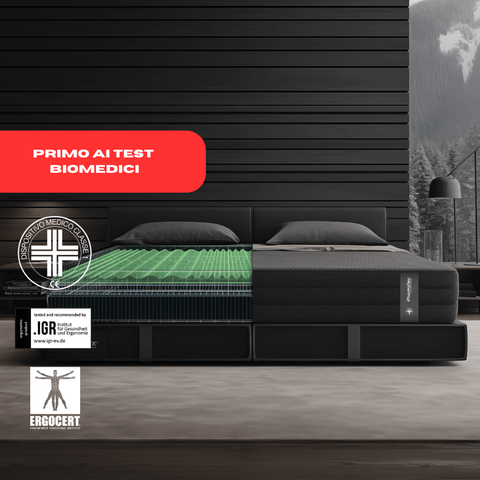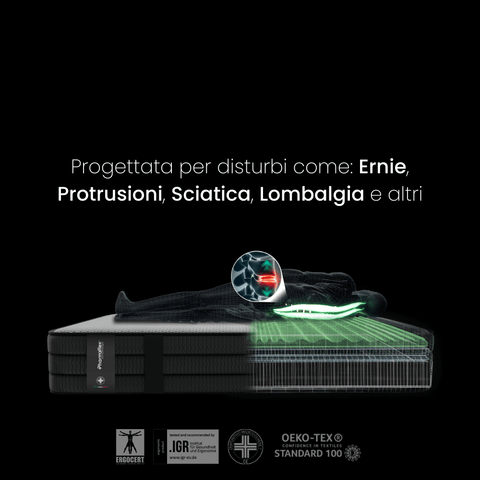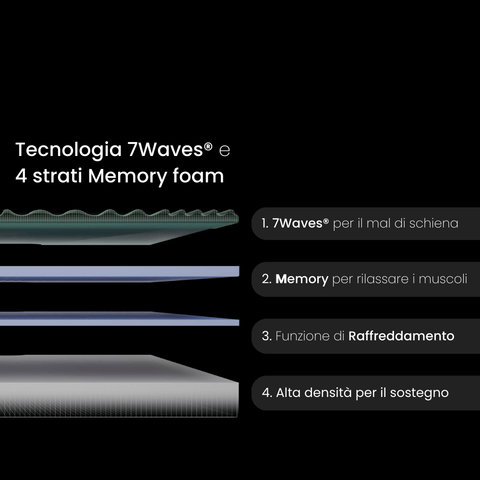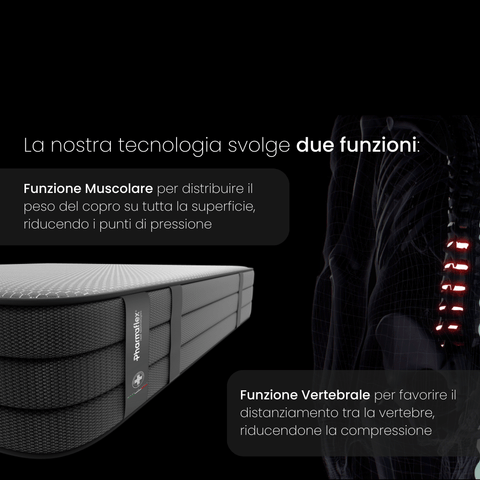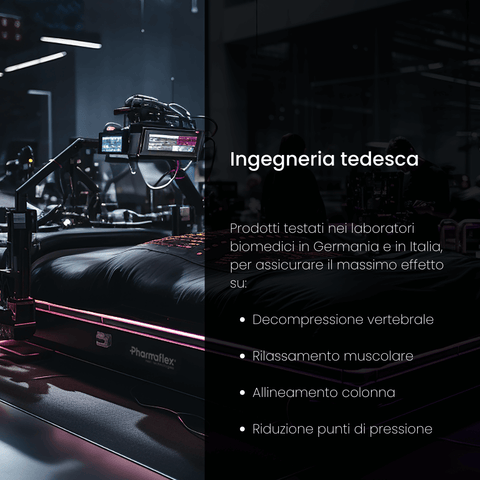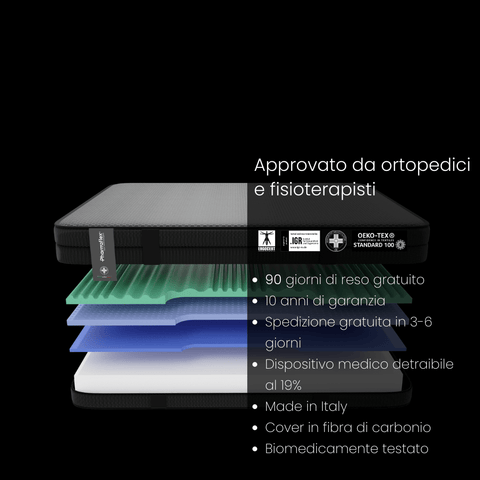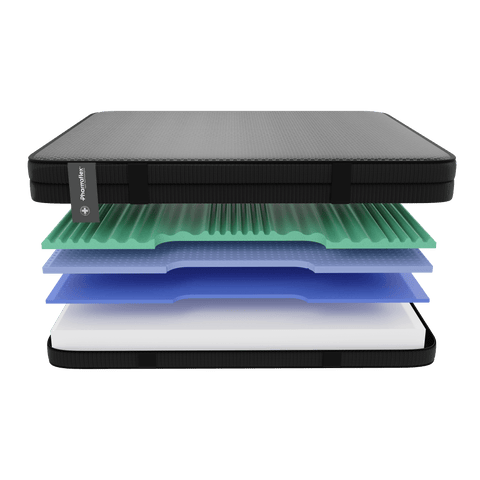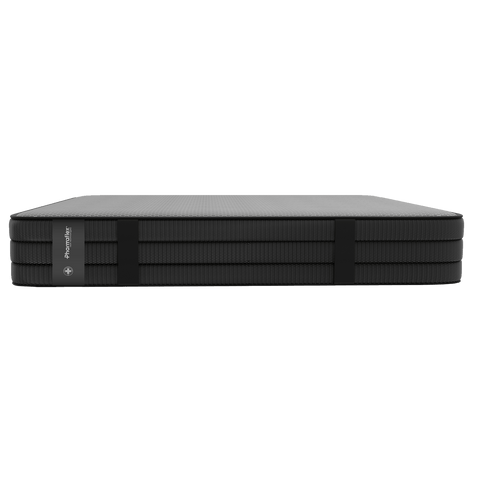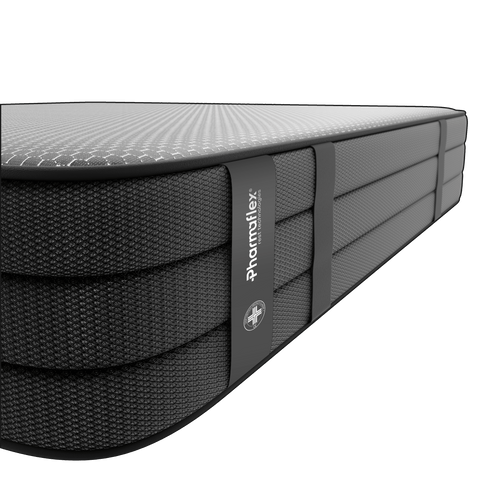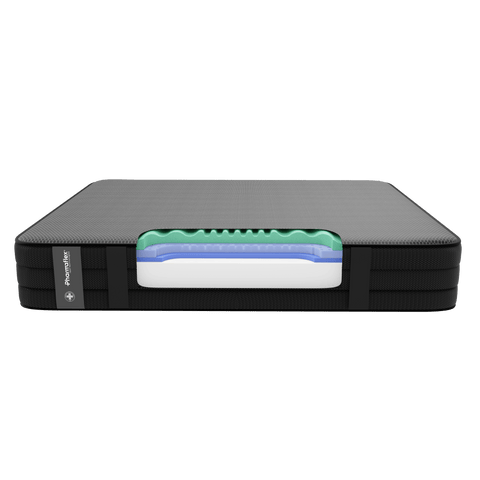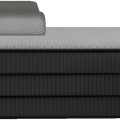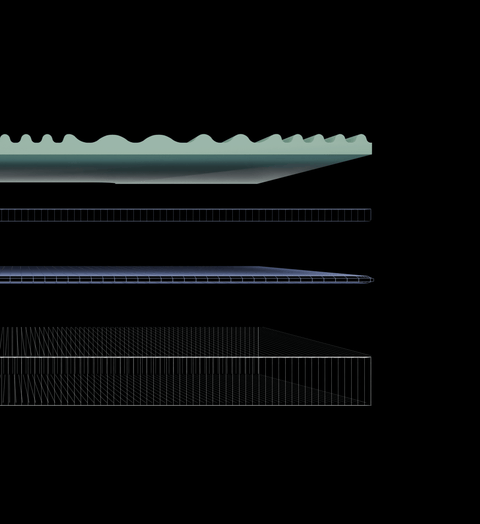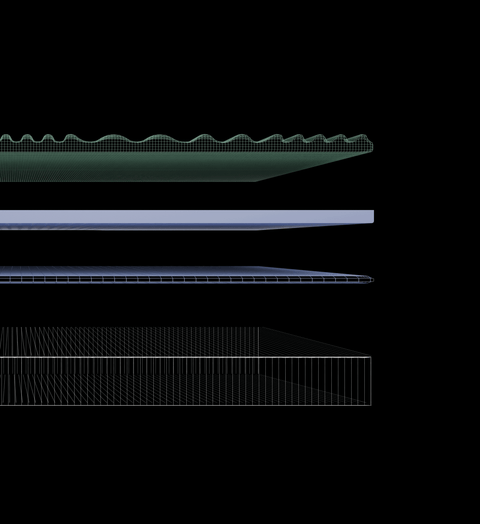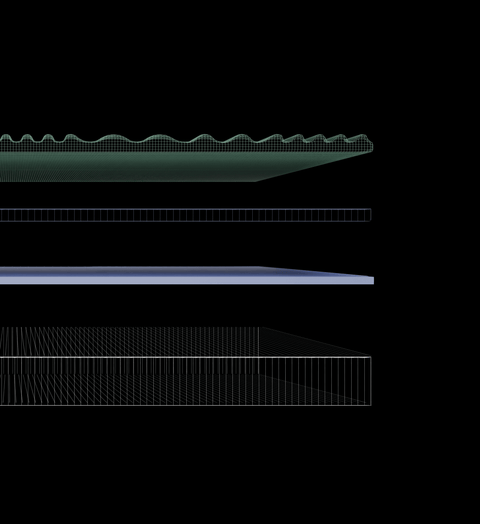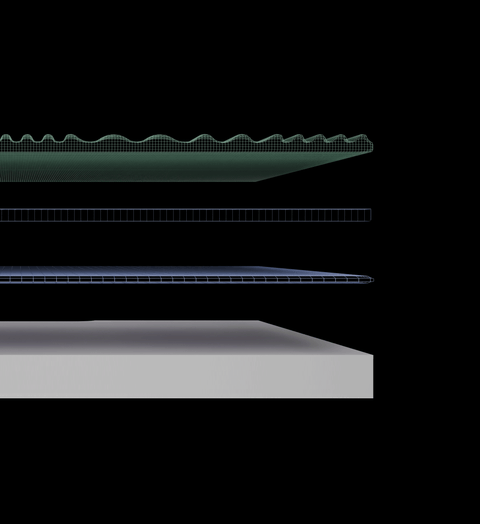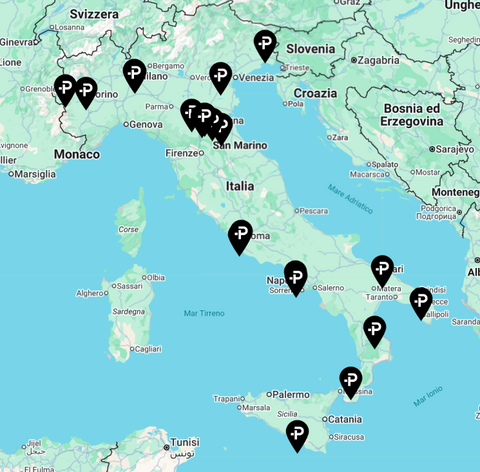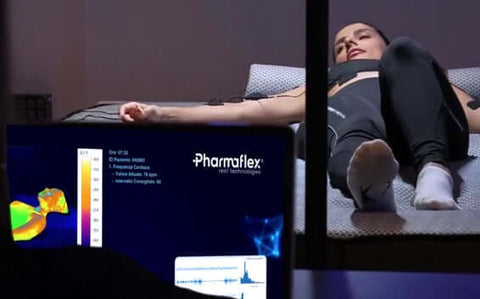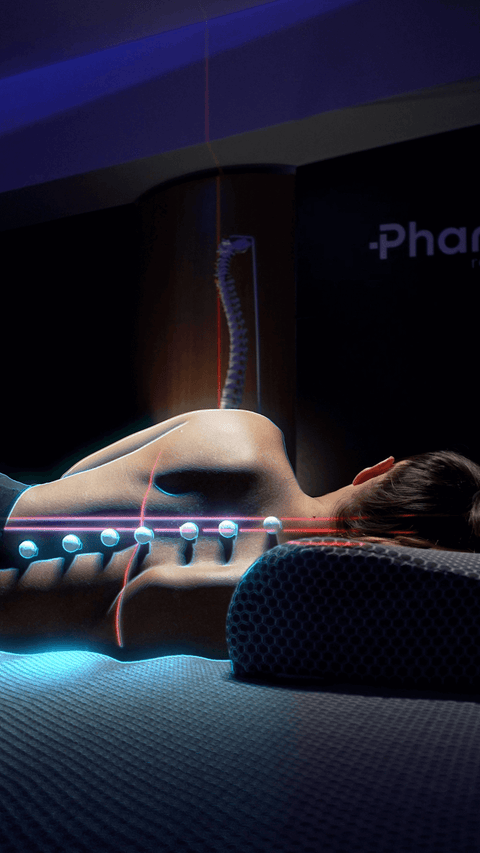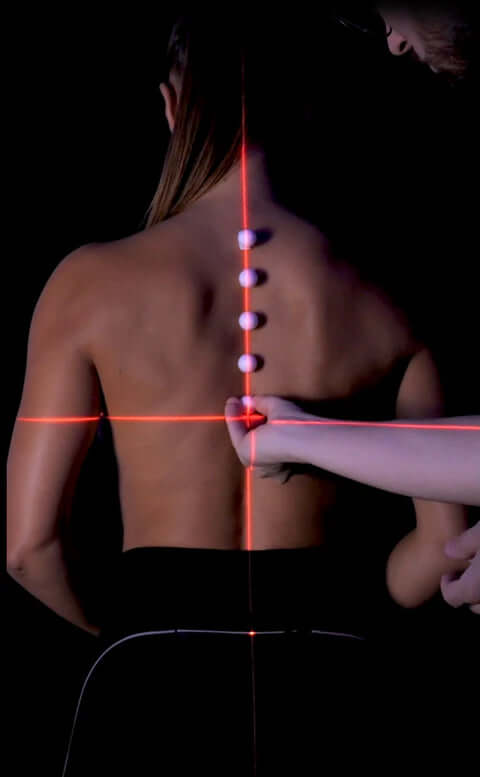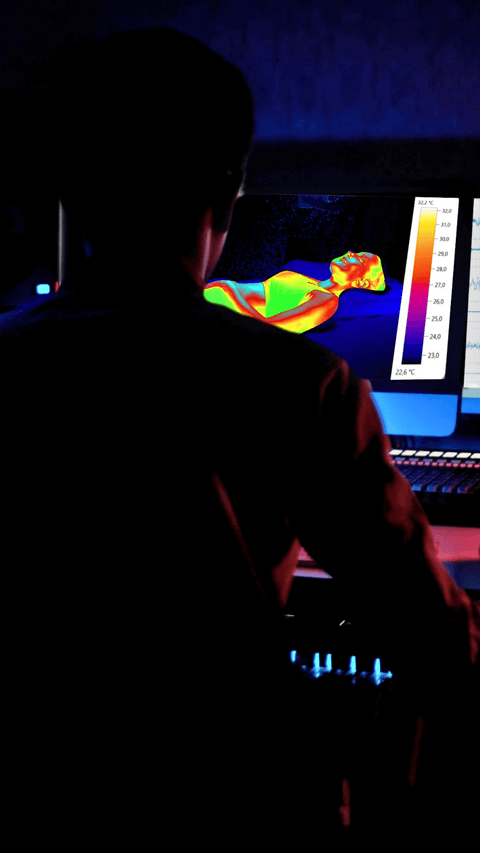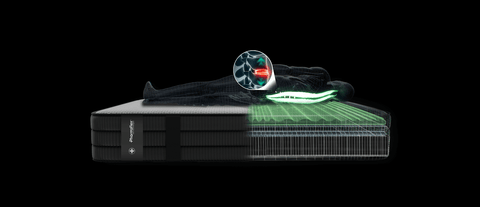
Ecco perché i dolori alla schiena spesso si manifestano di mattina
Nasce la nuova Tecnologia per la Decompressione Vertebrale:
Ecco i raggi X di un rachide lombare di una persona affetta da compressione vertebrale.
Nell'immagine a sinistra possiamo vedere il modo in cui le vertebre di una persona si presentano ai raggi x quando sono compressi. Nell'immagine a destra invece vediamo come dovrebbero apparire le vertebre distanziate in modo corretto.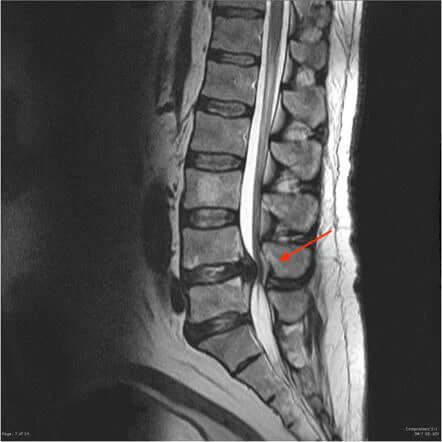
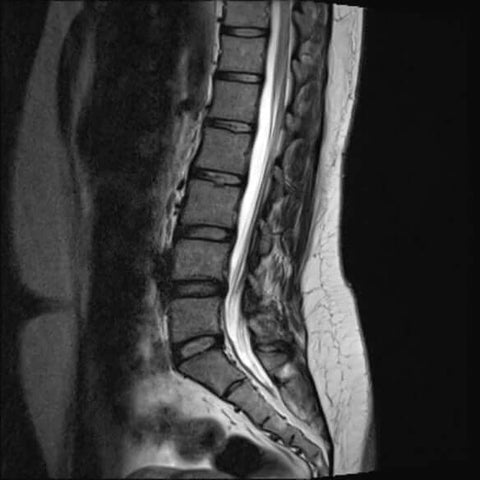
Analisi punti di pressione
Questa procedura misura come il peso del corpo viene distribuito sulla superficie di riposo. Durante l'analisi, un individuo si sdraia sul prodotto, e con l'ausilio di tecnologie avanzate si rilevano le zone dove il corpo esercita maggior pressione. Questo permette di identificare aree a rischio di stress o disagio, come le spalle, i fianchi o la zona lombare.
Allineamento vertebrale
Attraverso strumenti all'avanguardia ci impegniamo a monitorare il corretto allineamento del rachide cervicale in ogni posizione di riposo. Lo scopo è di assicurarci che non si verifichino condizioni che possano portare ad uno scompenso muscolare o scheletrico.
Decompressione vertebrale
Questo test avanzato ad alta precisione ha lo scopo di monitorare la colonna vertebrale prima e dopo l'utilizzo dei nostri prodotti. Confrontando i risultati rispetto ad altri prodotti, i nostri ingegneri biomedici possono valutare con precisione quanto efficacemente l'azione dei dispositivi abbia alleviato la compressione sui dischi e le vertebre.
Rilassamento muscolare
In questa fase elettrodi sottili vengono attaccati alla pelle o inseriti nei muscoli per registrare i segnali elettrici generati durante le contrazioni muscolari. Questo test è particolarmente importante in quanto ci consente di rilevare l'effettiva capacità di nostri prodotti di ridurre la tensione muscolare e valutare la qualità del riposo.
Secondo gli esperti
Le opinioni di esperti alla quale abbiamo chiesto di testare ed esprimete un parere.90 Giorni di reso gratuito
10 anni di garanzia
90 Giorni di reso gratuito
Oltre 200+ Fisioterapisti Pharmaflex
Ci avvaliamo di oltre 200 fisioterapisti ed operatori sanitari per prenderci cura dei nostri clienti, a partire dalla progettazione dei prodotti alle terapie post acquisto|
|
Certo! I nostri prodotti sono dispositivi medici di Classe 1. Pertanto, è possibile usufruire di una detrazione del 19%, in sede di Dichiarazione dei Redditi, sia nel 730 che in Redditi persone fisiche (ex Modello UNICO PF).
Certamente, le cover sono sfoderatili e comodamente lavabili. L’imbottitura, invece, non va lavata. Consultare il manuale d’uso per ulteriori informazioni al riguardo.
- Tolleranza di +/-2 cm sulle misure.

